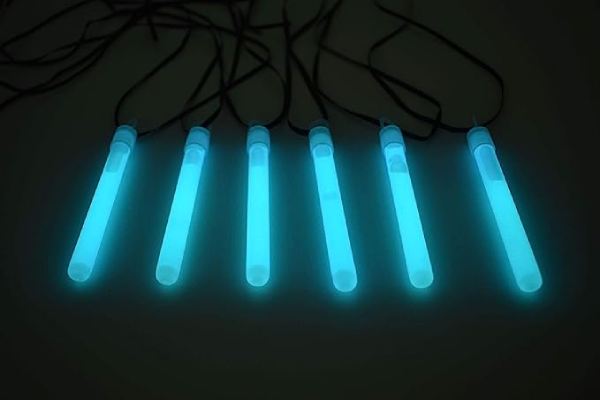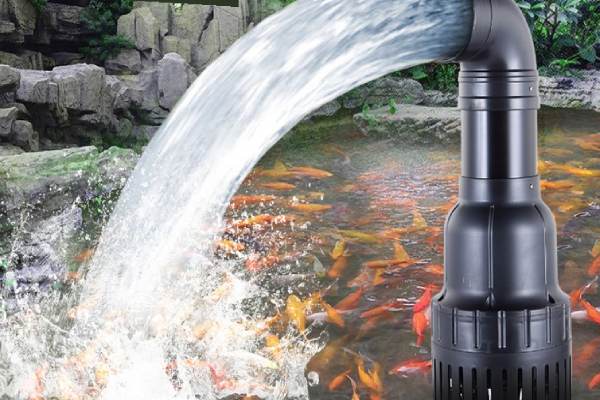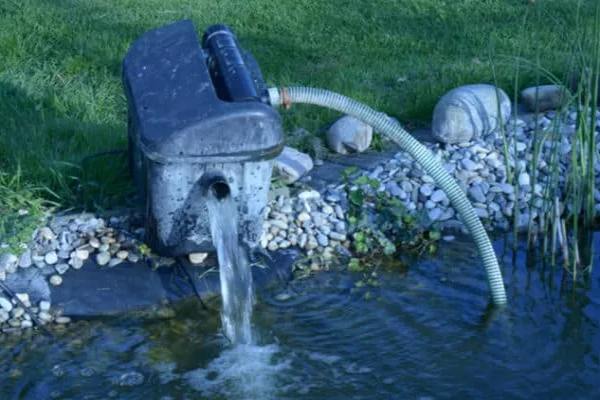How To Make Your Pond Pump Last Longer [10 Smart Tips]
Have you ever worried about how to make your pond pump last longer? If yes, keep reading because you will learn everything about how to make your pond pump last longer.
As we all know, pond pumps are crucial components of any backyard water feature. Without them, the water would not circulate, leading to an increase in mosquitoes and other nuisance insects.
The truth is, knowing how to make your pond pump last longer can save you lots of stress and money. That is why we have taken the time to explain in detail how to achieve that in this blog post. But before we get started, how long do pond pumps last? it’s important to consider how long a pond pump typically lasts.
General longevity of a pond pump
A pond pump’s durability is determined by the pump’s build quality, the frequency with which it is used, and the condition in which it operates.
Pumps that are continuously operated may wear out more quickly than ones that are only used for a few hours each day. Also, high-quality pumps tend to survive longer than their lower-quality counterparts.
The average lifespan of a pond pump is one year if its GPH is less than 5,000 and two years if its GPH is 5,000 or above.
Pumps like domestic grinder pumps have an average lifespan of four to five years, while sewage pumps have a longer lifespan of six years.
Determining the best pond pump
Selecting the best pond pump can be overwhelming, but have no fear because with some research and consideration, you can choose the best pump for your pond and keep it functioning well for years, the question “how long does a pond pump last?” won’t be a problem anymore.
Here are some factors to put into consideration while picking a pond pump.
Gallons Per Hour (GPH)
When searching for the perfect pump, it is most important to consider how much water it will be pumping.
One simple way to determine this is to check the pump’s GPH (gallons per hour) rating, which indicates how much water it can move in one hour.
Normally, you will want all the water to flow at least once an hour, so make sure your GPH is at least close to the number of gallons you have.
This is a quick and easy task, as the pumps will typically state their GPH ratings.
Also, you’ll need a pump with a higher GPH if your pond has waterfalls or extra filtration.
Head height
Head height is the vertical distance between the top of your water feature and the top of your pump. You’ll have to pick a pump with a higher head height if your pond has waterfalls.
Power usage
You know, different pumps require different amounts of electricity, so it’s crucial to pick one that won’t drive up your monthly bill too much.
Now that you have a better understanding of the factors you should consider when choosing a pond, let’s also look at the most common causes of decreased pump lifespan.
Most Common Causes of Decreased Pump lifespan
You’ve made a great decision by purchasing a high-quality pond pump to maintain your water feature.
But what if the lifespan of your pump is less than you anticipated? Well, the truth is, if you’re familiar with the most prevalent causes of premature pump failure, you may take measures to protect your investment and keep it running for a long time. So, in this section, we will be discussing the causes of premature pump failure.
The fluid properties of the pump
The performance of a pump can be affected by the fluid’s viscosity, temperature, and chemical makeup.
Pump damage or premature wear might result, for instance, from a fluid temperature that is too hot or too cold.
Similar stresses can be placed on the pump’s impeller, shaft, and other parts by fluids that are too thick or too thin.
Therefore, it is essential to select an appropriate pump and check that the fluid’s characteristics are suitable for the pump’s construction.
Strain on the Pipes
Incorrect alignment of the suction pipe with the pump flanges causes this issue. In most cases, a wrench and some adjusting nuts will do the trick, but if the problem persists, you may have to contact a professional.
Overworking the pump
Another common reason for a pump to wear out sooner than it should is overworking.
A pump that isn’t strong enough to move water in a large pond may have to work harder than it has to, shortening its lifespan.
You should not overwork the pump by running it for too long or at too high a pace, and you should select a pump that is proportional to the size of your pond.
Unregulated pressure from a high radial force
Excessive radial forces that are not controlled or maintained might shorten the life of pumps.
When a fluid passes through an impeller at a pressure difference, a radial force is produced.
Wear on bearings and other parts can be accelerated if this force is excessive or poorly controlled.
Selecting a pump with an appropriately designed impeller and maintaining an appropriate pressure are both crucial.
Simple ways to lengthen the lifespan of a pump
The lifespan of a pond pump might be limited if it is not properly maintained, much like any other mechanical equipment.
Fortunately, there are a few easy techniques to extend the life of a pond pump, these includes;
Clean the pump regularly
One of the most important things you can do to extend the life of your pond pump is to keep it clean.
Debris and other objects can accumulate inside the pump over time, diminishing its effectiveness and placing additional strain on its parts.
If your pond collects a lot of debris, you may need to clean the pump’s impeller more frequently than once every few months.
Keep the cord safe and protected
This is not difficult, but it is crucial. The entire pump will stop working if the power cord is cut or otherwise disrupted.
It’s also important to keep it secured, as little mishaps like being run over or slashed might potentially cause an electrical shock.
Use a pre-filter
Use a pre-filter to keep debris and other potential damage sources out of your pond pump.
Filtering out larger debris prior to it entering the pump lessens wear and tear on its internals.
Regularly check the impeller
Check the impeller every month or two just to be sure. Pre-filtration systems, like those made by Aquasana or Alen, are another layer of protection you can use.
How to clean your pond pump
A dirty pump can become blocked and damaged, so keeping it clean is an essential part of pond maintenance. In this section, we will cover the best practices for cleaning and maintaining a pond pump.
Turn off the pump
The first thing you should do before cleaning your pond pump is to turn it off. This will protect you and keep you from being electrocuted while you work.
Take the pump out of the water
Next, take the pump out of the water and set it down on a dry and clean surface. The impeller and other dirty components can then be more easily reached.
Disassemble the pump
To remove the impeller from the pump casing, you have to disassemble the pump.
Take care not to misplace any of the pump’s components, and write down the sequence in which you disassemble it so you can put it back together without any hassle.
Clean the housing and impeller
Use a soft brush, like an old toothbrush, to scrub the impeller and housing to get rid of debris, algae, or other buildup. Protect plastic and rubber components from strong chemicals.
You can use a solution of water and vinegar or a specialized pond pump cleaner for stubborn buildup.
Clean the filter
If your pond pump has a filter, take it out and clean it separately from the pump.
To get rid of grime and buildup, simply scrub it with a gentle brush or wash it in water.
Reassemble the pond pump
Once you’ve finished cleaning the pump’s components, you can reassemble it in the same sequence you disassembled it.
Be sure to screw or bolt everything together securely, but not so tight that you crack the plastic.
Test the pump
Finally, reconnect the power source and test the pump to make sure it is operating as intended. Look for leaks or strange sounds, and fix them if you find them.
Seasonal Upkeep for Your Pump
Taking care of your pond pump is not a one time task. Pond pumps require regular care. The needs of your pond pump vary with the season.
Summer, spring, and even fall are ideal times for pumps, but the harshness of winter can wreak havoc on them.
Here are ways to protect your pond pump during the winter.
Beware of ice build-up
The accumulation of ice presents a significant problem during the winter. Water expands as it freezes, which might cause problems for the pump’s internals.
Regular monitoring of the water temperature and action to prevent ice formation on the pond’s surface are necessary to avoid this.
A de-icer, pond heater, or bubbler can all help prevent ice from forming on your pond during the winter.
Adding warm water
This is a simple way to keep your pond water from freezing if the temperature is too low. Just drop the hose into the water and adjust the water pressure to a low level.
Since the water in the hose comes from a pipe, it will be warmer than the pond’s surface water, creating a more comfortable environment for your fish and other aquatic life.
Conclusion
Taking care of your pond pump is essential if you want to keep your pond looking its best.
Obviously, the tips in this blog post, “Here’s how to make your pond pump last longer,” will help you keep your pump running smoothly for years and also keep it running successfully for its entire lifespan.
FAQs
Depending on the size of your pond and the level of debris in the water, you should clean your pond pump every couple of weeks.
Yes, pond pumps can be left on throughout the winter, but they need to be protected from ice and other winter risks.
One way to protect your pump from debris is to install a pre-filter to remove the debris before it reaches the pump.




![10 Best Garden Waterfall Kits In The Market [Top Selections]](https://pondmemo.com/wp-content/uploads/2023/05/best-garden-waterfall-kits-1-img.jpg)